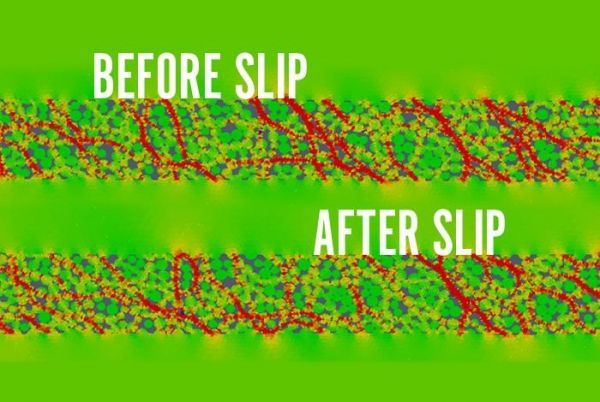Numerical simulations have pinpointed the source of acoustic signals emitted by stressed faults in laboratory earthquake machines. The work further unpacks the physics driving geologic faults, knowledge that could one day enable accurately predicting earthquakes.
“Previous machine-learning studies found that the acoustic signals detected from an earthquake fault can be used to predict when the next earthquake will occur,” said Ke Gao, a computational geophysicist in the Geophysics group at Los Alamos National Laboratory. “This new modeling work shows us that the collapse of stress chains inside the earthquake gouge emits that signal in the lab, pointing to mechanisms that may also be important in Earth.” Gao is lead author of the paper, “From Stress Chains to Acoustic Emission,” published today in Physical Review Letters and selected as the “Editors’ Suggestion.”
Stress chains are bridges composed of grains that transmit stresses from one side of a fault block to the other.
Gao works on a Los Alamos team that has identified the predictive acoustic signal in data from both laboratory quakes and megathrust regions in North America, South America and New Zealand. The signal accurately indicates the state of stress in the fault, no matter when the signal is read.
Read more at DOE/Los Alamos National Laboratory
Image: These before and after simulations show the collapse of a stress chain after a laboratory quake. (Credit: Los Alamos National Laboratory)


